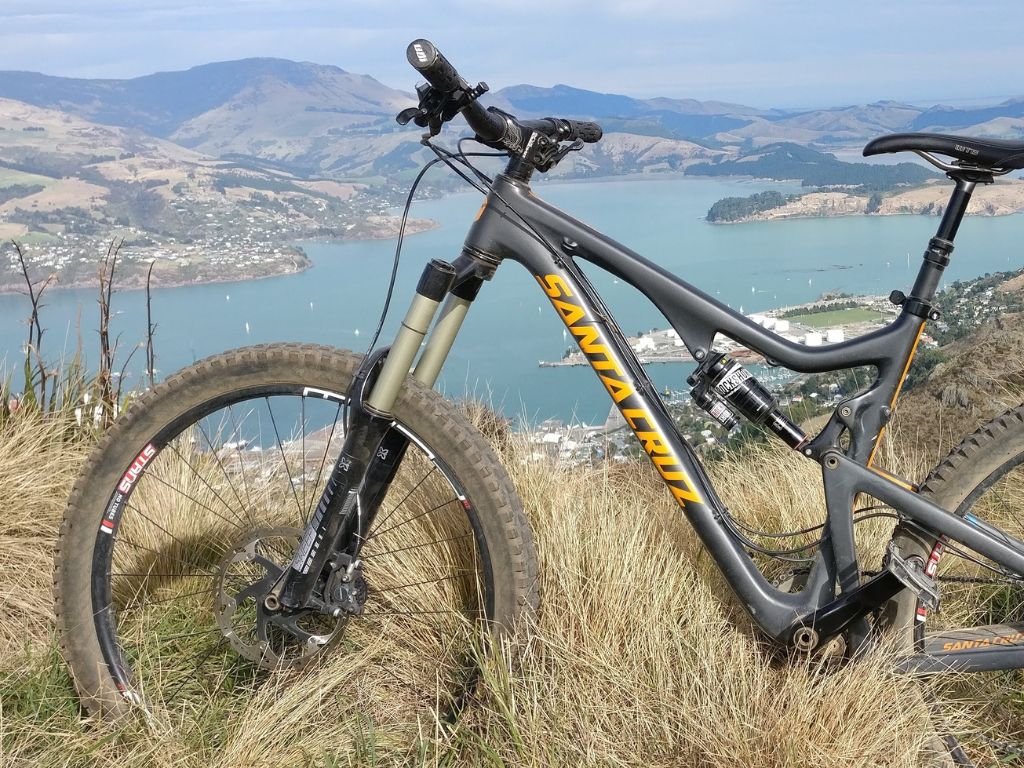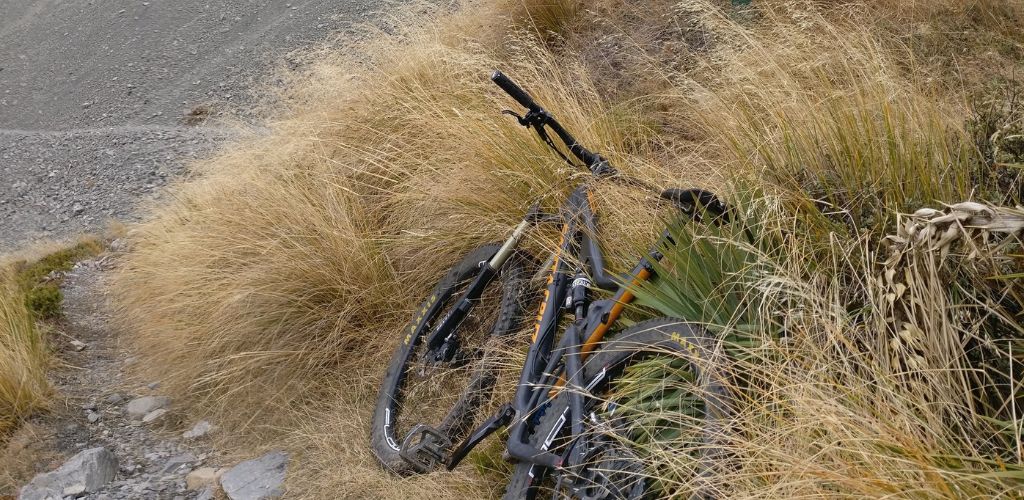Mountain biking… Does it demand superhero fitness? Not at all. Whether you’re a seasoned fitness enthusiast or someone just dipping your toes into adventure, the trails welcome all. Join us on an exploration—unraveling the truth behind how fit you need to be for mountain biking.
This article unlocks the secrets, offering insights that’ll turn your biking dreams into thrilling reality. Let’s ride into this exhilarating world and discover just how far your passion can take you.
Starting Point: Assessing Your Fitness Level
Mountain biking, with its mix of rugged terrains and demanding trails, requires a level of physical readiness to ensure an enjoyable and safe experience. Before venturing onto the paths less traveled, it’s crucial to gauge your fitness level.
Begin by honestly evaluating your physical condition. Consider your regular physical activities, endurance, and overall health. Take note of your engagement in cardio exercises, strength training, or any other activities that engage similar muscle groups used in mountain biking.
Mountain biking necessitates a blend of various physical attributes. It’s not just about leg power; it’s about overall fitness—strength, endurance, flexibility, and balance. Assess your cardiovascular endurance for sustained pedaling, leg strength for conquering climbs, and core stability for maintaining balance on tricky paths.
Practically simulate biking conditions to understand your preparedness. Start with shorter rides on flatter terrains, gradually increasing both distance and intensity. Pay attention to your body’s responses. Fatigue, soreness, or shortness of breath during these activities can signal areas needing improvement. These cues guide you to prevent overexertion, reducing the likelihood of injuries.
Setting realistic goals based on this evaluation is crucial. Progress gradually rather than attempting the most challenging trails immediately. Incremental improvement allows your body to adapt, reducing the risk of burnout or injury. Develop a fitness plan tailored to your strengths and weaknesses, incorporating exercises that target areas needing improvement.
In essence, the groundwork for a fulfilling mountain biking journey begins with understanding your current fitness level. Through honest assessment, practical evaluation, and setting achievable goals, you pave the way for a safer and more enjoyable adventure. Assess where you stand, adapt your approach, and gradually progress towards conquering those thrilling trails!

Essential Fitness Components for Mountain Biking
Mountain biking is an adventure that calls for a diverse set of physical skills. Here are the key fitness components that can enhance your biking experience:
- Cardiovascular Endurance:
It’s the backbone of mountain biking. Endurance keeps you going through long rides, uphill battles, and varied terrains. Activities like running, swimming, or cycling on flat roads build this stamina, preparing you for sustained pedaling on the trails. - Leg Strength:
Your legs are the engine on those climbs and power through each pedal stroke. Strengthening exercises like squats, lunges, and cycling-specific workouts develop the muscle power needed. Think of it as preparing your legs for the uphill challenges. - Core Stability:
A strong core keeps you balanced on uneven surfaces. It’s your support system as you navigate through tricky trails. Planks, twists, and yoga contribute to stability, helping you control your bike better on rugged paths. - Flexibility:
Being limber matters on the bike. Flexibility in your hips, hamstrings, and lower back allows smoother movements. Stretching routines like yoga or specific stretches for these areas improve your adaptability to different biking positions. - Upper Body Strength and Endurance:
While your legs take the lead, your upper body isn’t off the hook. It helps you maneuver, steer, and handle the bike. Exercises targeting arms, shoulders, and back muscles add strength and endurance, complementing your lower body efforts.
Building these components doesn’t happen overnight. Incorporate these into your routine gradually. A mix of exercises targeting these areas ensures a well-rounded fitness level for the trails.
Remember, it’s not about being perfect in each aspect, but about finding a balance that suits your biking style. Strengthening these fitness components sets you up for a more enjoyable and confident mountain biking experience.
Tailoring Your Training for Mountain Biking
Preparing for the unpredictable challenges of mountain biking requires a training regimen that mimics the demands of the trails. Here’s how you can tailor your training to better tackle those thrilling terrains:
- Ride, Ride, Ride:
The best way to train for mountain biking is, unsurprisingly, to ride your bike. Regular rides—both on and off-road—build familiarity with your bike, improve handling skills, and condition your body to adapt to varying terrains. Focus on diverse trails, including climbs, descents, technical sections, and flat stretches. - Interval Training:
Mountain biking involves bursts of intense effort followed by periods of recovery. Mimic this with interval training sessions. Alternate between high-intensity pedaling and periods of lower intensity or rest. It boosts cardiovascular endurance and helps your body adapt to the intermittent challenges of the trails. - Strength Training:
Strengthening specific muscle groups crucial for mountain biking enhances your performance and reduces the risk of injury. Target your legs with exercises like squats, lunges, and leg presses to power through climbs. Work on your core with planks, twists, and stability exercises to maintain balance on rugged trails. Don’t forget your upper body—focus on arms, shoulders, and back for better bike control. - Endurance Building:
Long rides build endurance, a critical component for tackling lengthy trails. Gradually increase ride duration and distance to push your stamina limits. Incorporate varied terrains and elevations to mimic the challenges you’ll face on mountain trails. - Technical Skill Development:
Apart from physical conditioning, mastering technical skills is key. Practice cornering, braking, descending, and handling obstacles in controlled environments. Skills clinics or guided sessions can provide invaluable guidance and practice in honing these crucial techniques. - Recovery and Rest:
Allow your body adequate recovery time. Rest days are as crucial as training days. They facilitate muscle repair and prevent burnout. Incorporate recovery activities like stretching, foam rolling, and low-impact exercises to aid in muscle recovery and flexibility. - Adapt and Evolve:
Listen to your body. Modify your training as needed. If a particular aspect feels lacking—be it endurance, strength, or technique—adjust your training plan accordingly. Flexibility in your training regimen allows for better adaptation to your individual needs.
Remember, consistency is key. A well-rounded training routine that encompasses various aspects—riding, strength, endurance, technical skills, and recovery—will better prepare you for the diverse challenges of mountain biking.
By tailoring your training to reflect the demands of the trails, you’ll step onto those paths not just as a rider, but as someone equipped to conquer the unpredictable and relish the adventure that mountain biking offers.

Gradual Progression: Building Your Stamina
In the realm of mountain biking, stamina stands as a cornerstone for conquering trails that span various terrains and distances. Developing and enhancing your stamina isn’t an overnight feat; it’s a journey that requires dedication, patience, and a strategic approach.
Begin with an honest assessment of your current stamina level. Consider the duration and intensity of your rides. Whether you’re a beginner or an experienced rider aiming to up your game, the principle of gradual progression remains key.
Start by setting achievable milestones. Don’t rush into tackling lengthy, demanding trails right away. Instead, incrementally increase the duration and intensity of your rides. Begin with rides within your comfort zone and gradually extend both the duration and difficulty over time.
Consistency is paramount. Regular rides, even if shorter in duration, contribute significantly to stamina building. Aim for a mix of rides—some shorter and more intense to push your limits, and others longer to enhance endurance.
Integrate interval training into your routine. Alternate between bursts of intense pedaling and periods of moderate or low intensity to challenge your cardiovascular system. This method not only enhances your stamina but also mimics the fluctuating demands of mountain biking trails.
As you progress, don’t neglect recovery. Adequate rest is vital for your body to adapt and grow stronger. Balance intense rides with lighter recovery rides or rest days to allow your muscles to recover and repair.
Nutrition and hydration play pivotal roles in stamina building. Maintain a well-balanced diet rich in carbohydrates, proteins, and healthy fats to fuel your rides and aid in recovery. Hydration is equally crucial—ensure you’re replenishing fluids before, during, and after rides to sustain energy levels.
Incorporate cross-training activities into your regimen. Activities like running, swimming, or hiking complement biking by engaging different muscle groups and improving overall fitness. They contribute to a well-rounded stamina-building routine.
Monitor your progress and adjust your training plan accordingly. Pay attention to how your body responds to increased durations and intensities. If you feel overly fatigued or notice persistent soreness, scale back and allow for more recovery time.
Remember, building stamina is a gradual process that varies for each individual. Patience is key. Embrace setbacks as learning opportunities rather than deterrents. Celebrate every milestone achieved along the way, no matter how small it may seem.
Ultimately, the journey toward building stamina for mountain biking is about consistency, gradual progression, listening to your body, and finding joy in the process. As your stamina grows, so does your confidence to take on more challenging trails and revel in the sheer thrill of mountain biking.
Mind Over Matter: Overcoming Fitness Challenges
In mountain biking, physical prowess is only one aspect of conquering the trails. The mental fortitude to overcome fitness challenges is equally—if not more—crucial. Here’s a dive into the mental strategies that can elevate your biking experience:
- Embrace the Journey:
Approach your fitness challenges with a mindset centered on growth and learning. Every hill climbed, every challenging trail navigated is an opportunity to improve. Embrace the process, understanding that setbacks are stepping stones to progress. - Set Realistic Goals:
Establish tangible yet achievable goals. Whether it’s conquering a particular trail, improving endurance, or mastering a technical skill, setting these milestones provides direction and motivation. Break them down into smaller, manageable steps, celebrating each accomplishment along the way. - Positive Self-Talk:
Your inner dialogue matters. Replace self-doubt with positivity. Encourage yourself during difficult climbs, reassure yourself when facing technical obstacles, and celebrate small victories. Cultivating a positive mindset builds confidence and resilience. - Visualization and Mental Rehearsal:
Visualize success. Before tackling a challenging trail or a steep climb, visualize yourself navigating it smoothly and successfully. This mental rehearsal primes your mind and body for the task ahead, enhancing confidence and focus. - Embrace Discomfort:
Fitness challenges often come with discomfort—sore muscles, fatigue, and mental exhaustion. Embrace these sensations as part of the journey. Recognize that pushing through discomfort fosters growth and resilience. - Focus on Breathing and Mindfulness:
Mindful breathing techniques can be a powerful tool during challenging rides. Focus on deep, rhythmic breaths to calm the mind and maintain focus. Practicing mindfulness helps you stay present, preventing distractions and boosting performance. - Learn from Setbacks:
Mistakes and setbacks are inevitable. Instead of dwelling on them, view them as lessons. Analyze what went wrong, learn from it, and use that knowledge to improve. Every setback is an opportunity to evolve and become a better rider. - Seek Support and Encouragement:
Surround yourself with a supportive community. Share experiences, seek advice, and draw motivation from fellow riders. Their encouragement can be instrumental in pushing through tough times. - Celebrate Progress:
Acknowledge and celebrate every bit of progress, no matter how small. Each improvement, whether it’s increased endurance, mastering a technical skill, or conquering a challenging trail, is a testament to your dedication and growth. - Enjoy the Ride:
Above all, relish the experience. Mountain biking isn’t solely about conquering trails; it’s about the joy of the journey, the thrill of pushing your limits, and the sense of accomplishment that comes with overcoming fitness challenges.
In the end, overcoming fitness challenges in mountain biking is a fusion of physical ability and mental resilience. Cultivate a mindset that embraces challenges as opportunities, harnesses positivity, and finds joy in the process. Remember, your mind can be your greatest ally in conquering those trails.

